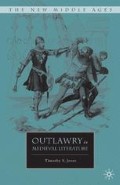Abstract
In the preceding chapter we observed that conflicting representations of Earl Godwin’s outlawry in 1051 mirrored conflicts over royal succession and political influence in the late Anglo-Saxon kingdom. A century and a half later, however, a very different sort of story was being told about the Earl of Wessex. In his De Nugis Curialium, the twelfth-century collector Walter Map includes a series of tales about Godwin, including two that portray the powerful lord of Wessex as a clever but unsympathetic man whose acquisitiveness was assuaged at the expense of the Church. First, desiring property that belonged to the nunnery at Berkeley by Severn, he sets his nephew to seduce the abbess and as many nuns as he can. When the young man has done so, Godwin accuses the abbess of corruption and receives the king’s permission to dissolve the foundation and take the property.1 Later he acquires Bosham by playing a grammatical trick on the archbishop of Canterbury. While the historical Godwin was probably no great friend of the Church and competition for land between secular and ecclesiastical parties was common in the eleventh century, there is no other evidence for the earl’s duplicitous stratagems for expanding his property.2 Nor do these stories told by Walter Map convey any coherent political interest in the Anglo-Saxon earl. He is often bold and courageous, frequently clever, and often just, but sometimes avaricious and self-interested.
Access this chapter
Tax calculation will be finalised at checkout
Purchases are for personal use only
Preview
Unable to display preview. Download preview PDF.
Notes
Victor Turner, The Ritual Process: Structure and Anti-Structure (1969; Ithaca: Cornell UP, 1977), p. 95.
Arnold van Gennep, The Rites of Passage, trans. Monika B. Vizedom and Gabrielle L. Caffee (London: Routledge and Kegan Paul, 1909).
Marjorie Garber, Vested Interests: Cross-Dressing and Cultural Anxiety (New York: Routledge, 1992), p. 17.
Paul Radin, The Trickster (London: Routledge and Kegan Paul, 1955), p. x
Lewis Hyde, Trickster Makes This World: Mischief, Myth and Art (New York: North Point Press, 1998), p. 7.
See William Hynes, “Mapping the Characteristic of Mythic Tricksters: A Heuristic Guide,” in Mythical Trickster Figures: Contours, Contexts, and Criticisms, ed. William Hynes and William Doty (Tuscaloosa: University of Alabama Press, 1993), pp. 34–45.
Keith Busby, “The Diabolic Hero in Medieval French Narrative: Trubert and Witasse le Moine,” in The Court and Cultural Diversity: Selected Papers from the Eighth Triennial Congress of the International Courtly Literature Society, ed. Evelyn Mullally and John Thompson (Cambridge: D. S. Brewer, 1997), pp. 415–26.
See the discussion of the African American animal fables in Henry Louis Gates, Jr., The Signifying Monkey: A Theory of African-American Literary Criticism (New York: Oxford University Press, 1987), pp. 51–60.
— (1997), 319–44 (334).
Elissa R. Henken, National Redeemer: Owain Glyndŵr in the Welsh Tradition (Ithaca: Cornell University Press, 1996), pp. 94–8.
See Stephen Knight, ed., The Forresters Manuscript: British Library Additional MS 71158 (Cambridge, UK: D. S. Brewer, 1998), pp. 17–22.
Guillaume de Jumièges, Gesta Normannorum Ducum, ed. J. Marx (Rouen: A. Lestringant; Paris: A. Picard, 1914).
Guillaume de Poitiers, Gesta Guillelmi ducis Normannorum et regis Anglorum, ed. Raymonde Poreville (Paris, 1952). Encomium Emmae Reginae, ed. Alistair Campbell, Camden Third Series 72 (London: Royal Historical Society, 1949). Vita Aidwardi Regis qui apud Westmonasterium Requiescit, ed. and trans.
Prank Barlow, The Life of King Edward (London: Thomas Nelson, 1962).
See David Wiles, The Early Plays of Robin Hood (Cambridge: D. S. Brewer, 1981);
and Alexandra P.Johnston, “The Robin Hood of the Records,” in Playing Robin Hood: The Legend and Performance in Five Centuries, ed. Lois Potter (Newark: University of Delaware Press, 1998), pp. 27–44.
Stallybrass , “‘Drunk with the Cup of Liberty’: Robin Hood, the Carnivalesque and the Rhetoric of Violence in Early Modern England,” Semiotica 54 (1984), p. 133.
On the “gentrified” Robin Hood, see Stephen Knight, Robin Hood: A Complete Study of the English Outlaw (Oxford: Blackwell, 1994), pp. 88–97, 13–152; and Robin Hood: A Mythic Biography (Ithaca: Cornell University Press, 2003), pp. 44–93.
Two incidents of Henry VIII’s use of Robin Hood imagery are described as taking place in 1510 and 1515 in Edward Hall’s The History of England during the Regin of Henry the Fourth and the Succeeding Monarchs to the end of the Reign of Henry the Eighth, ed. Sir H. Ellis (London: Johnson, Rivington et al., 1809).
Tzveten Todorov, Mikhail Bakhtin: The Dialogical Principle, trans. Wlad Godzich (Minneapolis: University of Minnesota Press, 1984), p. 77.
Copyright information
© 2010 Timothy S. Jones
About this chapter
Cite this chapter
Jones, T.S. (2010). Reading and Representing Transgression. In: Outlawry in Medieval Literature. The New Middle Ages. Palgrave Macmillan, New York. https://doi.org/10.1057/9780230114685_4
Download citation
DOI: https://doi.org/10.1057/9780230114685_4
Publisher Name: Palgrave Macmillan, New York
Print ISBN: 978-1-349-53683-2
Online ISBN: 978-0-230-11468-5
eBook Packages: Palgrave Literature CollectionLiterature, Cultural and Media Studies (R0)

